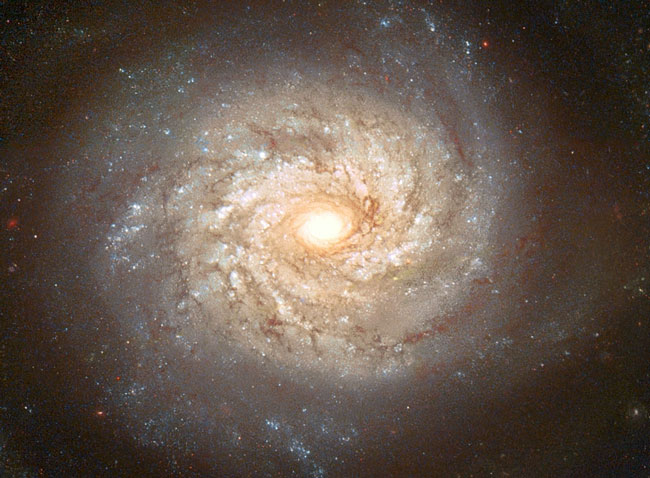
|
Explanation: What do stars look like just before they explode? To find out, astronomers are taking detailed images of nearby galaxies now, before any supernova is visible. Hopefully, a star in one of the hundreds of high resolution galaxy images will explode in the coming years. If so, archival images like that taken above by the Hubble Space Telescope can be inspected to find what the star looked like originally. This information is likely important for better understanding of how and why supernovas occur, as well as why some supernovas appear brighter than others. Pictured above, beautiful spiral galaxy NGC 3982 displays numerous spiral arms filled with bright stars, blue star clusters, and dark dust lanes. NGC 3982, which spans about 30,000 light years, lies about 60 million light years from Earth and can be seen with a small telescope toward the constellation of Ursa Major.
Public Lecture:
APOD Editor to speak in New York
|
January February March April May June July August September October November December |
| ||||||||||||||||||||||||||||||||||||||||||||||||
NASA Web Site Statements, Warnings, and Disclaimers
NASA Official: Jay Norris. Specific rights apply.
A service of: LHEA at NASA / GSFC
& Michigan Tech. U.
Based on Astronomy Picture
Of the Day
Publications with keywords: spiral galaxy - NGC 3982
Publications with words: spiral galaxy - NGC 3982
See also:
- APOD: 2025 September 4 B NGC 4565: Galaxy on Edge
- APOD: 2025 August 22 B A Tale of Two Nebulae
- APOD: 2025 August 19 B Giant Galaxies in Pavo
- APOD: 2025 August 18 B NGC 1309: A Useful Spiral Galaxy
- APOD: 2025 July 4 B NGC 6946 and NGC 6939
- APOD: 2025 June 30 B NGC 4651: The Umbrella Galaxy
- APOD: 2025 June 19 B NGC 3521: Galaxy in a Bubble
